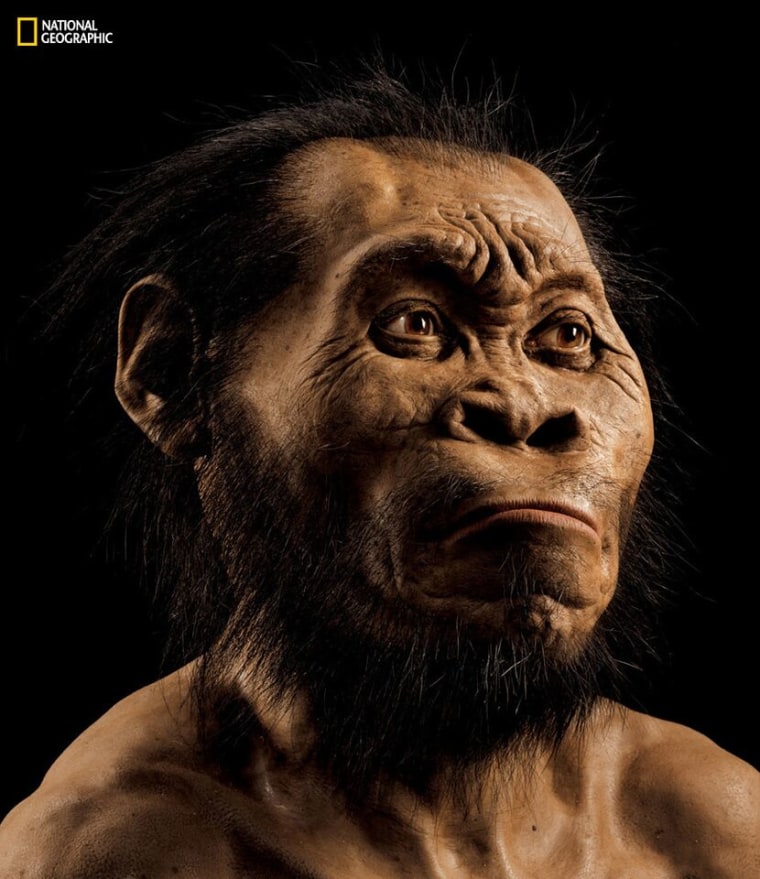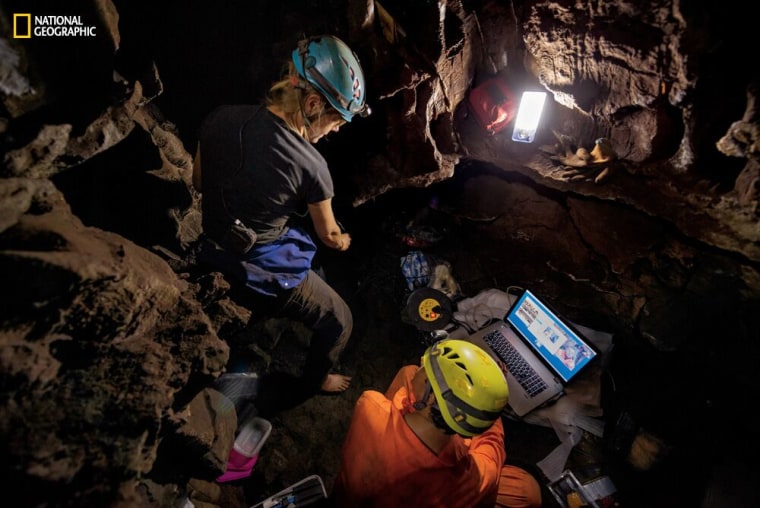The stunning announcement Thursday that scientists had discovered a "hybrid" early human species immediately set off discussion of whether it's the elusive "missing link" between modern humans and their earliest apelike ancestors.
Scientists from the University of the Witwatersrand, the National Geographic Society and the South African Department of Science and Technology/National Research Foundation revealed Thursday morning that they'd found a huge trove of fossils believed to be from a previously unknown early human ancestor — one that could have used tools and may have even figured out how to bury its dead.
Related: Scientists Reveal Homo Naledi, Our 'Unprecedented' Newest Cousin
At about 5 feet tall and only 100 or so pounds, the new species is a startling combination of ape- and human-like features that, until now, was entirely unknown to science.
The idea of a fossil record directly linking modern Homo sapiens to its earliest ancestors has faded in scientific circles in recent decades. The prevailing theory has been that the evolution of humanity has had too many branches to be charted in a straight line.
"The human tree is quite bushy, so the idea of a 'missing link' between humans and apes is kind of a Victorian-era idea, and we like to shy away from that," one of the expedition's leaders, Steven Churchill, a human paleontologist at Duke University, told NBC News.

But "we have definitely found something which seems to fit between those earlier australopiths — those little ape men — and true humans like Homo erectus," Churchill said.
Two years of study suggest that Homo naledi may have intentionally and carefully buried its dead — behavior that was previously thought to be unique to humans.
"The remarkable thing is the fossils were discovered in a deep chamber that required a roughly 36-foot vertical climb that was, in places, only about 7 inches wide," Churchill said.
"We were scratching our heads," he said. "How did multiple individuals get down into this deep chamber of the cave?"
The research team explored numerous scenarios to explain the location and scope of the fragments.
"We can rule out, for instance, that they weren't the victims of carnivores, like lions or leopards, that might have dragged their bodies into the cave," he said. And "we can tell that this wasn't a social group that died through some sort of catastrophe in the cave."

The only hypothesis that couldn't be ruled out, he said, "is that they were purposefully disposing of dead bodies down in this deep chamber in the cave — and we're talking about early humans who had a brain the size of an orange."
Churchill called the fossils "a very, very good and detailed look at a species of early human which seems to fill the gap."
But Jeffrey Schwartz, a renowned anthropologist at the University of Pittsburgh, urged caution in assessing the find.
While the foreheads of some of the new skulls are gently sloped, one of them has a taller forehead with a distinct brow ridge, suggesting that two species might be at the site, Schwartz told the journal New Scientist on Thursday.
"Putting these fossils in the genus Homo adds to the lack of clarity in trying to sort out human evolution," he said.
What everyone agrees on, however, is that the discovery is a landmark in the reconstruction of the human fossil record.
"The material is fantastic," Christoph P.E. Zollikofer, a professor of computer-assisted anthropology at the University of Zurich in Switzerland, told Deutsche-Presse Agentur — even as he declared that the idea that H. naledi might represent a linear link to modern humans wouldn't "survive scientific review."
"In my wildest fantasies about fossil discoveries, I never would have been anywhere near what we found here. This is absolutely an amazing discovery," Churchill told NBC News.
"My mind is absolutely blown," he said.
The discovery is detailed on the National Geographic website and will be featured on PBS' "NOVA" next Wednesday.

